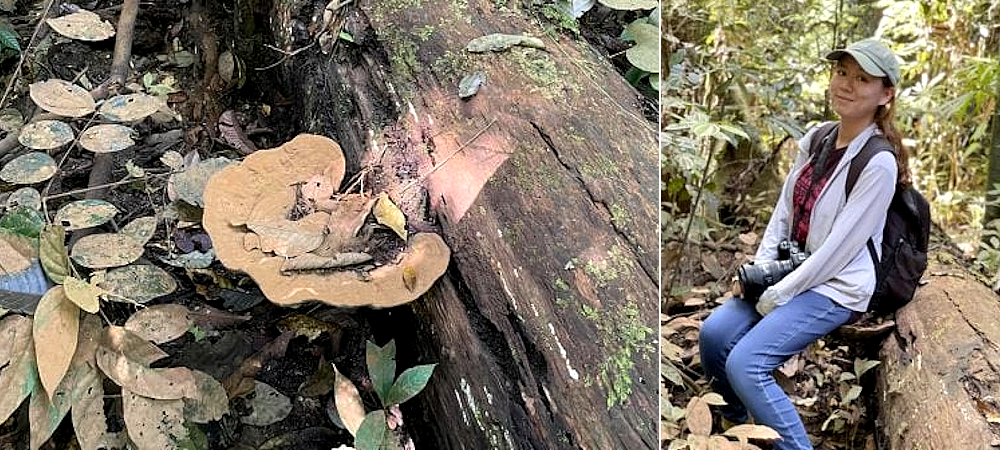August 5, 2025
KUALA LUMPUR – There is a Chinese saying: You can’t catch a tiger cub without entering the tiger’s den.
In order to get a firsthand information, it has long been part of my job to venture deep into the rainforests of the Peninsula.
While I’m always thrilled by adventure, a subtle fear always lingers in my heart: what would I do if I were to really come face-to-face with a tiger one day?
As a child raised in the city, I was taught that “the road is like a tiger’s mouth.” But it was only in the forest that I realized this phrase is perhaps more fitting here.
Most of my knowledge of wild animals came from TV and zoos, so I had no sense of danger in the forest.
You could say that urban folks are afraid of reckless drivers who beat traffic lights and drive without a license, while the indigenous people fear elusive beasts and spirits.
Just as a city has its rules and laws, the forest also has its own. In every indigenous village I visit, I learn these valuable local insights from different plants and animals.
For example, to avoid getting lost, the Bateq people mark forks in the road by breaking branches.
They also constantly observe the ground for signs of danger to decide whether to turn left or right.
When we were told that fresh tiger footprints had been found, we were all terrified and wondered if we should start running.
But a few young indigenous men remained very calm. They gathered some wood nearby and started a fire, using the thick white smoke to create a barrier between us and the tiger.
Then they instructed us to go in the opposite direction to distance ourselves from the beast.
According to early records, the Negrito/Semang people of the Peninsula believed that animal cruelty would bring about thunderstorms, and that if you burned leeches, tigers would be drawn to the smell of blood.
Austrian anthropologist Paul Schebesta also recorded that a Negrito woman who had harmed leeches had to perform a blood sacrifice during a thunderstorm to appease the anger of heaven and earth.
When I read these old texts, it sent shivers down my spine—we had brushed past a tiger right after we burned leeches.
At first, we had simply used sticks to poke at the suckers to make them fall off, but there were so many that my friend had to light a cigarette to try and weaken the army of leeches.
Looking back now, it was a blessing in disguise that we didn’t run into a tiger head-on that day.

Many indigenous communities are very afraid of thunderstorms, believing them to be retribution for their people violating taboos. PHOTO PROVIDED BY SIN CHEW DAILY
Tiger omens and the tenong taboo
In fact, many indigenous communities believe that “thunderstorms” are not natural phenomena, but a “catastrophic retribution” for humans mocking or mistreating plants and animals.
The Mah Meri people, in particular, are especially afraid of animals that possess powerful spiritual energy, or tenong, including tigers, white-handed gibbons, dogs, and skinks.
The Semai people, on the other hand, believe that incest or offending elders can also anger the Thunder God, and that humans and nature must coexist based on mutual respect and shared prosperity.
What is tenong? Once, when a group of indigenous friends and I walked into the primary forest of Endau-Rompin National Park, I suddenly heard a roar. The image of a fierce tiger immediately came to my mind.
Just as I was trying to confirm this assumption, a man with us immediately warned me not to say anything aloud.
Soon after, the sky became overcast and a rumbling sound could be heard. The heavy rain then poured down.
Although I was soaked, I was also relieved.
When we got back to the village, they explained that no matter what strange noises you hear or what animals you see in the forest, you must not respond or you will fall into the trap of tenong.
For example, if I see a deer carcass and state this fact, the deer’s spirit might choose me as its new host and drive me insane.
Or, if I hear a tiger’s roar and express my concern, the tiger will sense me as a new prey and charge toward me, making me its dinner for the day.
Skeat, a scholar during the British colonial period, once recorded that in Malay folk beliefs, tigers were not just simple wild beasts but were animals with a spirit.
They were sometimes respectfully referred to as Dato Hutan (Forest Elder or Forest Datuk).
Because tigers were regarded as human incarnations, one had to “consult” or “divine” to confirm before a hunt if the action was approved. This process was called bertenong.
According to an oral account from a Malay man in Selangor in late 19th century, an old man in the forest adopted a mysterious boy with snow-white skin, green eyes, and long fingernails, named Muhammad Yatim a long time ago.
However, the boy was so brutal that even his teacher, Toh Saih Panjang Janggut, could not tolerate him and kept whipping him with a kind of wood called los.
With each whip, Muhammad’s form became more and more distorted, and he eventually turned into a four-legged beast.
The teacher was shocked and exclaimed, “This is Allah’s Tiger (Harimau Allah)!” and cursed it to hunt only at the edge of the primary and secondary forests and to prey on “headless people,” or it would be destroyed by the regal iron (iron of the regalia) and the thirtieth chapter of the Quran.
The black stripes on its body were said to be the marks left by the teacher’s whipping.
From then on, before hunting, the tiger had to first divine by lying on the ground and holding a leaf between its claws.
When a headless human figure appeared on the leaf, the tiger knew that person was the “destined” prey.
Although this story is a bit different from the version I heard, what’s certain is that not responding in the forest is also a way to avoid getting on the same frequency as the spirits of these beasts and putting yourself in danger.

A Jah Hut friend said a type of fungus called Kulat Telinga Gajah often grows on dead trees that are still standing. If they encounter a tiger, they will climb these trees to escape the danger (L); I tried to sit on the Kulat Telinga Gajah to test its endurance and found it really solid! PHOTOS PROVIDED BY SIN CHEW DAILY
The were-tiger belief of Malay Archipelago
The legends about tigers, of course, don’t stop there. I’ve also heard that in the Malay Peninsula, the spirit companions (gunik) of many indigenous shamans are tigers.
Generally, the tiger’s spirit would possess the shaman during a healing ceremony, causing him to roar or lick the patient.
Some people even claimed to have heard the sound of a tiger’s footsteps outside the ceremonial house.
The most extreme form is the were-tiger concept.
The Korinchi Malay people of Sumatra believe this is a being that can transform between a human and a tiger, with the power to take revenge, punish, and protect.
It also plays the role of a moral police and social control in the village.
The Urang Hulu people of Johor believe that tigers are related to the grading exams for shamans.
When a shaman keeps getting strange illnesses, his relatives usually have to send him into the forest to compete with a tiger.
If he comes out of the forest alive the next day, it means he has successfully passed the test and has been promoted to the next level.
It is said that by passing seven levels of exams, one can become a great shaman.
Unfortunately, I have never encountered any of these situations. The only time I came face-to-face with a “tiger” was on a hot afternoon.
At that time, a man of Indian descent came to the forest clinic for help, claiming that he had been cursed.
The next second, he transformed into a “tiger,” baring his teeth, growling, with his fingertips tense and his fingers curled like claws.
After he left, the shaman mischievously imitated the man, roaring like a tiger, which nearly gave me a heart attack. But thankfully, I once again brushed past a tiger.
More on the Echoes of the Forest
Yi Ke Kuik is a Master’s student in Anthropology at National Taiwan University focusing on issues related to indigenous people in Peninsular Malaysia. Founder of myprojek04 photography initiative and writes for a column called Echoes from the Forest in Sin Chew Daily, highlighting the photos and stories of indigenous people.


